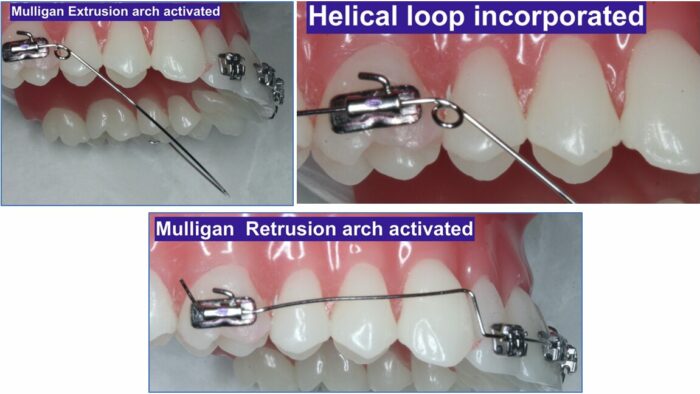December’s Tip

Mulligan Mechanics Part VI Mulligan Extrusion Arch
By Dr. Adrian J. Palencar, MUDr, MAGD, IBO, FADI, FPFA, FICD
December 2024
IAO Diplomate
68 – Tremont Drive, ST. Catharines
ON L2T 3B2, Canada
Do not memorize, understand – Dr. T. Mulligan
After the .018 SS arch wire is measured and cut, it should be inserted into the maxillary or mandibular tubes, to evaluate the parallelism and the natural tip of the molars. The 30° – 45° tip-forward (gable bend off center bend, “V” pointing gingivally) in front of the molar tubes precipitates: a small extrusion and lingual moment (de-torquing, up-righting) of the incisors. Large intrusion and mesial moment (tipping) on the molars, this renders the dental arch shorter, therefore, place a bend-back (cinch) distally to the molar tubes.
The amount of the applied force should be measured with the Gram gage (do not exceed 70 grams).
Mulligan Retrusion Arch
The Mulligan Retrusion Arch is indicated for retracting flared incisors and is very easy to fabricate. Place 4.0 – 5.0 mm 90° step up bend, just 2.0 mm distally to the lateral incisors. The bend of the horizontal arm should be more acute. The Mulligan Retrusion Arch may be passive, intrusive, or extrusive, depends on if you activate it with a tip-back or tip forward.
The retrusion is done by pulling the arch wire back 1.0 mm and a bend-back (cinch) every month, until the desired result is achieved.

References:
- Mulligan T.F., Common Sense Mechanics in Everyday Orthodontics, (29 -31)
- Palencar A. J., Case finishing and Mechanics, (29)
